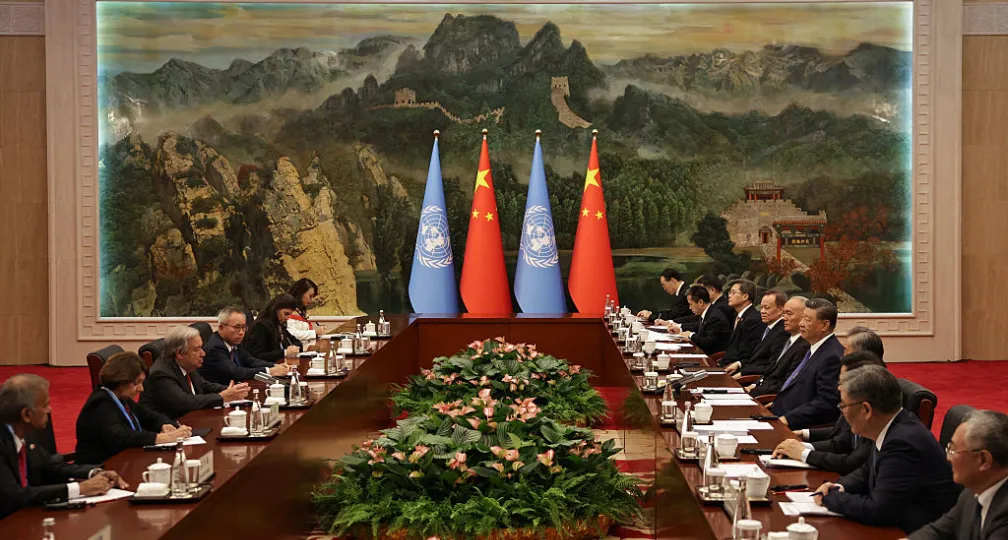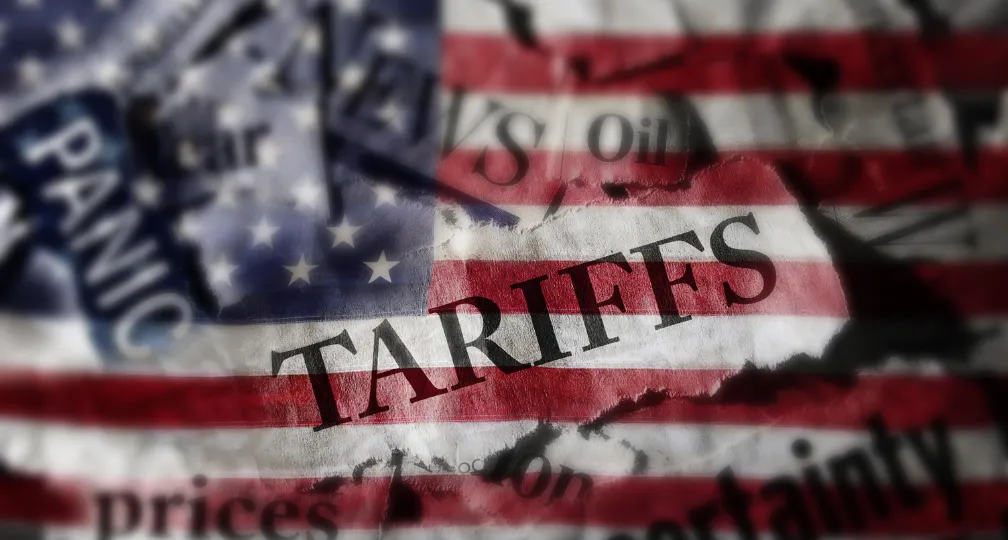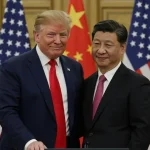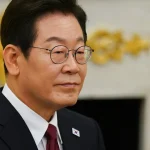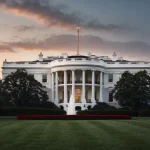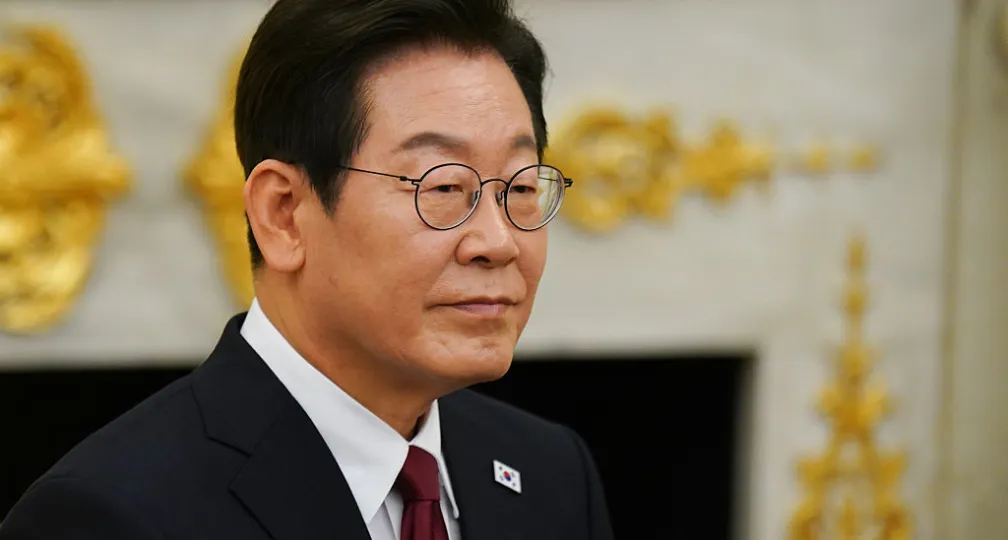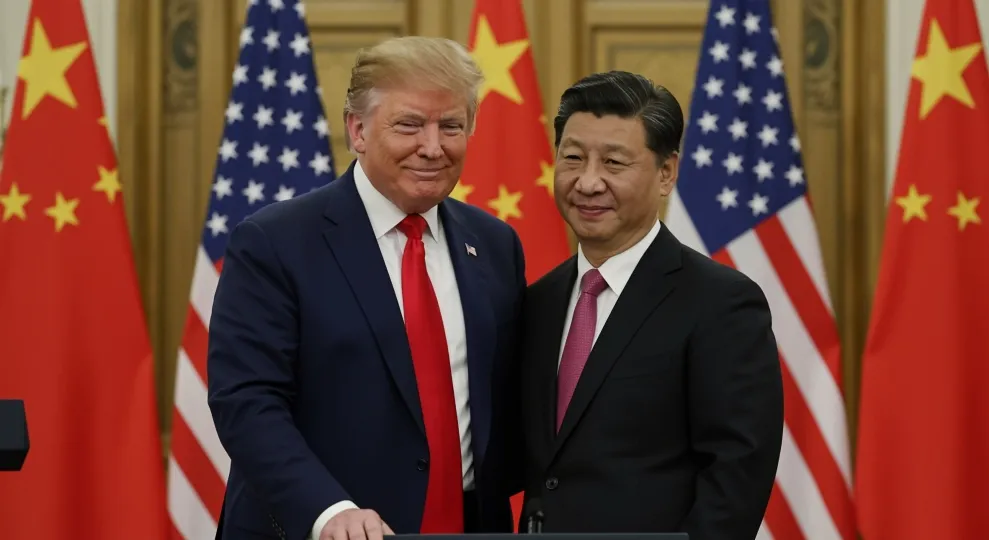Trump’s Major Presidential Actions & What Experts Say
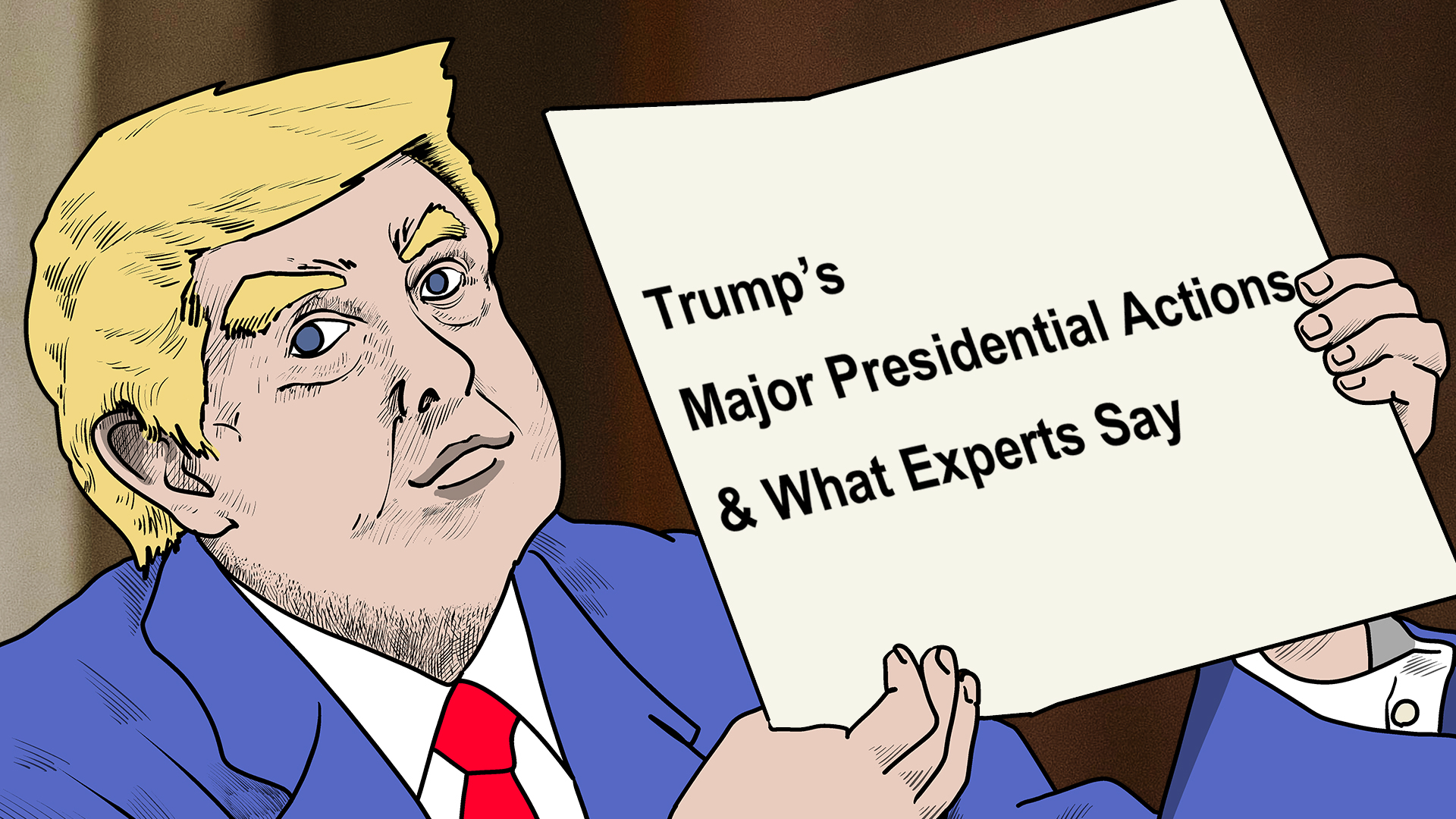
List of Executive Orders
Executive Order: Modifying Reciprocal Tariff Rates To Reflect Discussions With The People’s Republic Of China (May 12, 2025)
This executive order reflects the outcome of U.S.-China consultations aimed at correcting asymmetric trade practices. It orders the suspension of 24% of the additional tariffs imposed by the United States on imports from China for 90 days, while maintaining a 10% tariff. Additionally, the tariff rate on small imports of synthetic opioids will be reduced from 120% to 54%. These tariff rate changes will take effect on May 14, 2025.
Click here for the executive order.
Comment
On May 12, the Chinese government announced the Joint Statement on U.S.-China Economic and Trade Meeting in Geneva, officially confirming that the two countries had agreed on significant tariff reductions. This agreement is seen as a concession by the United States that exceeded China’s initial expectations, and can be interpreted as the United States acknowledging the depth of mutual dependence and the limitations of embargo measures. Chinese state-run media has portrayed this as a “victory” achieved through a firm negotiating stance. Notably, the conclusion of this agreement, in the absence of similar agreements between the United States and key allies such as Japan and South Korea, carries symbolic significance. While the post-agreement tariff rate on China remains high at 30%, it is lower than the rate imposed on Taiwan (32%). The next 90 days will serve as a preparation period for the next phase of negotiations, likely shifting focus to more strategic issues such as non-tariff measures, investment restrictions, and technology transfer. In response to non-tariff concerns, China has announced some easing of restrictions on U.S. companies, but has refrained from making clear statements on its restrictions on rare earth exports to the United States. Instead, on the same day the joint statement was issued, the central government convened relevant agencies and local governments from major rare earth production areas and announced stricter controls over the entire export process. At this point, the Trump administration has gained little from negotiations with China, and it is expected that China will continue to use rare earths and other strategic resources as bargaining chips in future talks. (Kenichi Doi)
Executive Order: Modernizing Defense Acquisitions And Spurring Innovation In The Defense Industrial Base (April 9, 2025)
This executive order aims to increase the flexibility and efficiency of defense procurement and revitalize the defense industrial base. It calls for simplifying procurement across the Department of Defense, developing talent to implement innovative methods, and conducting a comprehensive review to address inefficiencies in defense acquisition programs.
Click here for the executive order and the fact sheet.
Comment
This executive order addresses longstanding challenges in defense procurement that have hindered the timely and effective acquisition of critical capabilities, and outlines corresponding countermeasures. Notably, it directs the active use of the Adaptive Acquisition Framework (AAF), a system introduced under the Biden administration to address concerns that rigid procurement rules were stifling innovation and discouraging industry participation. The expanded use of the AAF is expected to accelerate procurement timelines and encourage the integration of commercial technologies and new market entrants into the defense sector. The order also mandates a 90-day review of major equipment projects across all military services to clarify program priorities. This initiative, originally introduced during the Biden administration, previously failed to produce meaningful outcomes due to challenges in inter-service and regional coordination. The order reflects notable continuity between the Trump and Biden administrations in the area of defense capability development, suggesting that bottom-up policy formulation processes are functioning with a degree of effectiveness. (Hirohito Ogi)
Executive Order: Restoring America’s Maritime Dominance (April 9, 2025)
This executive order offers a comprehensive response to the decline of the U.S. shipbuilding and maritime industries. Under the leadership of the National Security Advisor, a “Maritime Action Plan (MAP)” will first identify priority areas, then outline measures to promote targeted investments, reform port fees and tax practices—particularly those related to transshipment through Canada and Mexico—strengthen maritime security, support the industry by expanding shipbuilding capacity and workforce training, and improve regulatory and procurement efficiency.
Click here for the executive order and the fact sheet.
Comment
Announced on April 9, 2025, this executive order aims to strengthen the U.S. maritime sector through infrastructure development and workforce training. It includes measures such as the creation of a “Maritime Action Plan (MAP),” the imposition of port fees on Chinese-made or Chinese-flagged vessels, and calls for cooperation from allies. There is growing recognition in the U.S. that it faces strategic disadvantages compared to China in shipbuilding capacity, merchant fleet size, and naval strength—issues now regarded as urgent policy priorities. A fact sheet released by the White House notes that only 0.2% of the world’s ships are U.S.-made, compared to 74% made in China. Additionally, no U.S.-made gantry cranes are used at major American ports; around 80% are Chinese-made. Despite this context, the executive order’s strategic objectives remain vague and warrant close attention. Although the order states its purpose is to “promote national security and economic prosperity.” it does not lay out any concrete strategic objectives. However, based on its content, it appears the intent is not to strengthen naval forces in preparation for direct military conflict with China, but rather to develop a merchant fleet capable of transporting resources and supplies during wartime. Given the U.S.’s limited shipbuilding capacity, collaboration with allies—particularly Japan—on shipyard investment and technical and human resource support will be essential. Japan is likely to leverage this dynamic in future negotiations with the Trump administration. (Rintaro Inoue)
Executive Order: Regulating Imports with a Reciprocal Tariff to Rectify Trade Practices that Contribute to Large and Persistent Annual United States Goods Trade Deficits (April 2, 2025)
President Trump has declared a national emergency, citing long-standing trade imbalances that have hollowed out U.S. manufacturing and weakened supply chains, thereby posing a threat to national security. In response, this executive order implements a “reciprocal tariffs” system, building on the memorandum on reciprocal trade and tariffs issued in February 2025. A base tariff of 10% will be applied to all imports starting April 5, with additional country-specific surcharges introduced from April 9. Japan, for instance, will face an additional 14% tariff—bringing the total to 24%.
Any prior executive orders that conflict with this measure will be suspended, revised, or repealed as necessary.
Click here for the executive order, fact sheet, and a related article.
Comment
Although presented as “mutual tariffs” intended to address trade imbalances, the rates are not genuinely reciprocal. Rather than reflecting equal terms, the tariffs are applied based on each country’s trade deficit with, and export volume to, the United States—undermining the notion of a truly mutual framework. Canada and Mexico, already subject to a 25% tariff, are excluded from this measure. Tariffs remain at 0% for goods covered under the USMCA, in accordance with Executive Orders issued on March 2 (EO14227 and EO14226). Sanctioned states such as Russia, Belarus, and North Korea are exempt, while Iran—under unilateral U.S. sanctions—is subject to a 12% tariff. Curiously, tariffs also apply to uninhabited territories such as the Heard and McDonald Islands, likely a byproduct of automated data processing systems. The tariff rates were unilaterally imposed without consideration of diplomatic context, though future negotiations may result in revisions. As existing agreements like the USMCA continue to be honored, there appears to be room for negotiation with countries such as South Korea—which also has a free trade agreement with the U.S.—and Japan, which maintains a Trade Agreement on Goods (TAG). (Kazuto Suzuki)
Executive Order: Immediate Measures to Increase American Mineral Production (March 20, 2025)
This presidential order acknowledges that although the United States possesses abundant reserves of critical minerals, production has lagged—primarily due to regulatory constraints—resulting in increased dependence on imports. Recognizing this as a national security risk, the order mandates the rapid development and implementation of domestic mineral production projects. Additionally, pursuant to the Defense Production Act, it delegates the relevant authority to the Secretary of Defense to accelerate the national response.
Click here for the executive order and the fact sheet.
Comment
This Executive Order expands the President’s powers to boost American mineral production and streamline permitting for mining enterprises. Recognizing US dependence on foreign suppliers for critical minerals, and blaming overregulation for causing the US to lose its mining competitiveness, it utilizes national security and emergency powers to facilitate maximum domestic mineral production. Thus it builds on the January 20 Executive Order “Unleashing American Energy” (which declared “it is […] in the national interest to unleash America’s affordable and reliable energy and natural resources”) by further linking national security to economic and energy security. To this end, Trump has directed Federal agencies to compile lists of all mineral production projects and submit them to the new National Energy Dominance Council for expedited review. Additionally, the provisions of the 2015 Fixing America’s Surface Transportation Act, which streamlined the permit process for transportation infrastructure, will now be applied to critical mineral production. Mining capacity will also be expanded through the Defense Production Act and the Defense Department’s Office of Strategic Capital, and by prioritizing critical mineral production over all other activities on Federal lands with significant mineral deposits. In these endeavors, private sector collaboration will be prioritized, with financing, loans, and investment support—including a new critical minerals fund—being made available through the Development Finance Corporation. The authority to fast track funding and streamline permitting to ensure resilient domestic supply chains for critical minerals is only possible because, on January 20, Trump declared a “national energy emergency”. This allows the President to sidestep Congressional oversight over the allocation of funds and the permitting process. (Andrew Capistrano)
Executive Order: Establishment of the Strategic Bitcoin Reserve and United States Digital Asset Stockpile (March 6, 2025)
This order establishes a “Strategic Bitcoin Reserve” to manage Bitcoin—recognized as a leading cryptocurrency—confiscated through criminal and civil proceedings, as well as a “United States Digital Asset Stockpile” to manage other cryptocurrencies. The purpose is to strategically utilize these digital assets.
Click here for the executive order and the fact sheet.
Comment
This presidential action aims to create a digital asset strategy that positions the US as an international leader in cryptocurrency. First, it establishes a Strategic Bitcoin Reserve, which will treat Bitcoin as a reserve asset. The Treasury Department holds around 200,000 Bitcoins as a result of asset forfeitures in civil and criminal proceedings that will be used to capitalize this reserve, and other federal agencies have been ordered to determine whether they have the legal authority to transfer any Bitcoins they hold into the reserve as well. These Bitcoins will only be held as a reserve asset and not sold on the market, while the Treasury and Commerce Departments will evaluate “budget-neutral strategies” to acquire additional Bitcoins. Second, the executive order establishes a US Digital Asset Stockpile for non-Bitcoin cryptocurrencies. Unlike the Strategic Bitcoin Reserve, the government has no plans to acquire additional assets and will capitalize this stockpile solely through asset forfeitures. Together, the reserve and stockpile are intended to “address a cryptocurrency management gap”, seizing the strategic advantage of being the first nation to create a Bitcoin reserve. Trump’s 2024 campaign made direct appeals to the cryptocurrency community—promising to make America the “crypto capital of the world”—and some have warned that these policies could use government policy to increase demand and thereby enhance the value of privately held Bitcoin portfolios. Regardless, the new reserve and stockpile show Trump’s intention of finding novel ways of increasing US assets and revenues, like the idea of a US sovereign wealth fund, and to listen to his technology savvy advisors, who have influenced his AI and other policies.(Andrew Capistrano)
Executive Order: Addressing the Threat to National Security from Imports of Timber, Lumber (March 1, 2025)
It is argued that despite the importance of the timber and lumber industry for construction and the military, the United States relies on imports for its timber resources, making it vulnerable. The Secretary of Commerce has been instructed to investigate the impact of timber and lumber imports on national security and to propose measures, including tariffs, to address this issue.
Click here for the executive order and the fact sheet.
Comment
This executive order is another example of the Trump administration using national security implications as a rationale to potentially impose tariffs or other measures in order to incentivize domestic production of critical materials. It should be considered alongside another executive order, “Immediate Expansion of American Timber Production” released the same day, which directs federal agencies to provide guidance on ways to deregulate timber production and reduce dependence on foreign suppliers. The national security dimension will be investigated, under authority granted in Section 232 of the Trade Expansion Act of 1962, and a report will be presented to the president within 270 days. If imports of timber, lumber, and their derivative products are determined to threaten national security, the report will recommend actions to mitigate such threats, including potential tariffs, export controls, or incentives to increase domestic production through strategic investments and permitting reforms. This language is nearly identical to previous executive orders addressing US dependence on foreign steel, aluminum, and copper. But timber and lumber is also important in the context of US tariffs on Canada, a major source of imports that are at risk in the ongoing bilateral trade conflict, as the US has been a net importer of timber and lumber since 2016. Trump has argued that Canada supports its timber and lumber industry through subsidies and other “predatory trading practices”, and stated the US could use trade policy and deregulation to lower the relative cost of tapping US forests to meet domestic demand. (Andrew Capistrano)
Executive Order: Addressing the Threat to National Security from Imports of Copper (February 25, 2025)
This executive order emphasizes the need to build a domestic supply chain due to concerns that global copper production is dominated by certain countries and that the United States is dependent on imports. In light of this, the order directs the Secretary of Commerce to investigate the impact of copper imports on national security.
Click here for the executive order and the fact sheet.
Comment
This executive order declares: “Copper is a critical material essential to the national security, economic strength, and industrial resilience of the United States”. Defining copper in this way allows the president to use Section 232 of the Trade Expansion Act of 1962 to order an investigation into the national security risk of US dependence on imported copper. A report identifying vulnerabilities in the copper supply chain will be delivered within 270 days. It will recommend the next steps, including tariffs, export controls, or incentives to increase domestic production such as strategic investments, permitting reforms, and enhanced recycling initiatives. A fact sheet recognizes copper’s “vital role” in defense applications, infrastructure, and emerging technologies. It also notes that the US has “ample copper reserves” but its smelting and refining capacity lags other nations, especially China, which controls 50 percent of global smelting capacity. As a result, US reliance on copper imports “surged from virtually 0% in 1991 to 45% of consumption in 2024”. Trump has taken a similar approach to steel and aluminum, framing economic dependence in national security terms to allow him to impose tariffs or take other retaliatory measures to boost domestic industrial competitiveness for these essential metals. (Andrew Capistrano)
Executive Order: Commencing The Reduction Of The Federal Bureaucracy (February 19, 2025)
President Trump issued an executive order to initiate a sweeping reduction of federal agencies and functions deemed unnecessary, with the aim of dramatically downsizing the federal government. The order also mandates a review of these agencies’ budget requests.
Click here for the executive order and the fact sheet.
Comment
Executive Order 14217 is part of the Trump administration’s effort to drastically reduce the size of the federal government and streamline the bureaucracy. The order seeks to eliminate unnecessary agencies and functions, targeting wasteful government spending. Specific entities cited for reduction include the Presidio Trust, the Inter-American Foundation, the United States African Development Foundation, and the United States Institute of Peace (USIP). The administration also plans to abolish certain advisory committees and programs, signaling a major overhaul of the existing administrative structure. However, the confusion surrounding the abolition of the USIP highlights ongoing issues with the administration’s approach to transferring authority and questions of legal legitimacy. While there may be some rationale for reducing the size of the bureaucracy, concerns remain about politically motivated appointments and the potential abuse of executive power. Bureaucratic reform requires effective and lawful procedures—yet the disarray and political tensions sparked by this order are likely to persist. (Ken Jimbo)
Executive Order: Establishing The National Energy Dominance Council (February 14, 2025)
This order establishes the National Energy Dominance Council to maximize U.S. energy production. The council is tasked with advising the president on strategies for deregulation and comprehensive energy production plans.
Click here for the executive order and the fact sheet.
Comment
This Executive Order establishes the National Energy Dominance Council (NEDC), chaired by the Secretary of the Interior, which includes Cabinet officials and key White House advisors. To align the energy strategy with US strategic priorities, the Interior Secretary has also been elevated to the National Security Council. NEDC’s mandate is to “expand all forms of reliable and affordable energy production to drive down inflation”, grow the US economy, create jobs, reestablish American manufacturing leadership, lead the world in AI, and “restore peace through strength” by wielding US commercial and diplomatic levers to “end wars across the world”. A major focus is oil and gas, but the NEDC is also tasked to expand the discovery and use of uranium, biofuels, geothermal heat, and critical minerals. Within 100 days, the NEDC has been ordered to provide Trump with a “National Energy Dominance Strategy” that reduces regulations and facilitates greater private-sector energy investments. This is a key pillar of Trump’s economic plan: reducing US dependence on foreign energy imports, growing the economy, and enabling deficit and debt reduction. Importantly, lowering the cost of energy is also one of the ways Trump aims to lower inflation. But the national security implications are equally interesting: Trump wants US allies to purchase more US oil and gas, and also to use cheaper energy prices as leverage against Russia to bring an end to the Ukraine war. At the same time, however, cheaper energy will benefit China, potentially impacting Trump’s strategy to drive a wedge between Moscow and Beijing. (Andrew Capistrano)
Executive Order: Implementing The President’s “Department of Government Efficiency” Workforce Optimization Initiative (February 11, 2025)
This executive order directs the newly established Department of Government Efficiency (DOGE) to implement workforce reduction measures across federal agencies. The order mandates that for every four retirements, only one new hire will be permitted—except for critical roles such as public safety. It also requires agencies to coordinate hiring plans with DOGE and to review, streamline job qualification standards, and downsize low-priority plans.
Click here for the executive order.
Comment
The DOGE, established through the January 20 executive order—effectively reorganizing the Office of Digital Services created under the Obama administration—, has now begun to take concrete action. One of its first major steps has been cutting executive branch expenditures, including a reduction in USAID’s budget. To support DOGE’s efforts to reduce personnel costs, the government has imposed a hiring freeze, allowing just one new hire for every four retirements. In addition, DOGE has been granted access to the Treasury Department’s accounting system, enabling it to oversee salary levels. As a result, early retirements have surged, leading to operational disruptions across the federal government.
A particularly concerning development is the staffing reductions at the Department of Energy, which oversees nuclear security. If key personnel losses continue, there is a risk that nuclear material management could be compromised. (Kazuto Suzuki)
Executive Order: Pausing Foreign Corrupt Practices Act Enforcement to Further American Economic and National Security (February 10, 2025)
This executive order temporarily suspends enforcement of the Foreign Corrupt Practices Act (FCPA) for 180 days and directs the Attorney General to review ongoing investigations. The administration argues that excessive enforcement of the FCPA is undermining the global competitiveness of U.S. companies and negatively affecting national security.
Click here for the executive order and fact sheet.
Comment
The FCPA, enacted in 1977 following the Watergate scandal and the Lockheed bribery scandals——which led to the arrest of former Japanese Prime Minister Kakuei Tanaka—prohibits bribery of foreign officials. The law has broad extraterritorial reach, applying even to foreign companies when they use their U.S. subsidiaries or use U.S. banks for acts in concern. Since his first administration, President Trump has criticized the “excessive” and “unpredictable” enforcement of the FCPA against U.S. companies. This executive order reflects his long-standing position. Although the order only temporarily suspends enforcement, a memorandum issued by Attorney General Pam Bondi on February 5 states that future FCPA investigations will focus on cartel-related and transnational criminal activities. Some speculate that once the suspension is lifted, the FCPA may be selectively enforced in line with “America First” principles—meaning U.S. authorities may prioritize investigations of foreign firms rather than U.S. companies.(Yusuke Ishikawa)
Executive Order: Ending Procurement And Forced Use of Paper Straws (February 10, 2025)
This executive order halts federal procurement and distribution of paper straws and calls for a nationwide plan to phase them out within 45 days. The aim is to reverse the previous policy that prioritized paper straws over plastic ones.
Click here for the executive order and fact sheet.
Comment
The movement to ban plastic straws gained momentum as part of efforts to combat marine plastic waste. In 2021, the Biden administration issued an order mandating the use of paper straws in federal facilities. This new order repeals that mandate. The original push for paper straws was fueled by viral images—such as a turtle with a straw stuck in its nose—that sparked public outrage. However, this move was unpopular even among many environmentalists—partly because they had failed to address the broader scope of the problem and had reduced the issue to plastic straws only. Among the Trump administration’s various executive orders, this one has garnered unexpected public support. (Kazuto Suzuki)
Executive Order: Addressing Egregious Actions of The Republic of South Africa (February 7, 2025)
This executive order addresses multiple concerns regarding the South African government, including its policy of expropriating farmland owned by Afrikaners (a minority ethnic group predominantly of Dutch descent) without compensation, its decision to take Israel to the International Court of Justice, and its growing ties with Iran. In response, the order commands the suspension of financial aid to South Africa and the provision of support for the resettlement of Afrikaner refugees.
Click here for the executive order and fact sheet.
Comment
Since the end of apartheid in 1990, South Africa has been governed by the African National Congress (ANC), with the Black majority holding political power. Some white South Africans, particularly Afrikaners, have opposed policies aimed at improving the social and economic status of the Black population. One prominent critic is Elon Musk, who wields significant influence within the Trump administration. Musk claims that Afrikaners are being persecuted and stripped of their rights. However, in reality, Afrikaners—who once constituted the ruling elite—remain a wealthy economic class, and efforts to improve the social status of the Black population are still ongoing. Despite this, the executive order appears to be based largely on Musk’s arguments. Notably, the fact sheet justifies it as a human rights measure, framing the Afrikaners as a persecuted minority. This approach is particularly interesting as an example of how the Trump administration employs human rights rhetoric to support its policies. (Kazuto Suzuki)
Executive Order: Withdrawing the United States from and Ending Funding to Certain United Nations Organizations, and Reviewing U.S. Support to All International Organizations (February 4, 2025)
This executive order mandates the withdrawal of the United States from the UN Human Rights Council (UNHRC) and prohibits future funding for the UN Relief and Works Agency for Palestine Refugees in the Near East (UNRWA). It also instructs the Secretary of State to review international organizations, treaties, and agreements that conflict with U.S. interests and report findings to the President. The order specifically prioritizes a review of the United Nations Educational, Scientific, and Cultural Organization (UNESCO), citing concerns over its alleged antisemitic stance.
Click here for the executive order.
Comment
This executive order, following the earlier withdrawal from the World Health Organization (WHO) on Trump’s first day of his second term, marks another retreat from engagement with UN organizations. All three organizations targeted by this order are known for their support of Palestine, aligning this decision with the Trump administration’s pro-Israel stance. Notably, the order was issued on February 4, the same day Trump met with Israeli Prime Minister Netanyahu, suggesting a deliberate show of support for Israel. Regarding UNESCO, the order does not call for immediate withdrawal but rather a review of U.S. membership. However, given that the U.S. previously withdrew from UNESCO under the Reagan administration in 1984 and again during Trump’s first term in 2017, it is highly likely this will lead to a third withdrawal. Such a move raises concerns that China, which maintains strong ties with UNESCO, could further expand its influence within the organization. (Kenichi Doi)
Executive Order: A Plan for Establishing a United States Sovereign Wealth Fund (February 3, 2025)
This order directs the Secretary of the Treasury and Commerce to develop a plan for establishing a Sovereign Wealth Fund for the United States.
Click here for the executive order and the fact sheet.
Comment
This Executive Order stems from Trump’s interest in the sovereign wealth funds of other nations. He sees them as mechanisms to amplify the financial return to a nation’s assets, and—since investing national assets can lead to greater long-term wealth generation—to leverage those returns for strategic benefit. The sovereign wealth fund’s stated purpose is to “maximize the stewardship of [US] national wealth for the sole benefit of American citizens” by promoting fiscal sustainability, “establishing economic security for future generations”, and promoting US economic and strategic leadership internationally. Within 90 days, the Secretaries of the Treasury and Commerce will send Trump a plan that will include recommendations for funding mechanisms, investment strategies, fund structure, and a governance model. The US federal government directly holds $5.7 trillion in assets, not including natural resource reserves. If these assets can generate returns the way Trump envisions, the sovereign wealth fund could be a success. And the idea fits into Trump’s other economic policies, since he believes fair and balanced trade, national energy dominance, and tax and regulatory relief will spur growth, thereby creating revenue streams. These revenues could then be invested in what Trump calls “great national endeavors”, such as advanced manufacturing, technological research, and other priorities that private capital will avoid since they require a long wait between investment and returns. In this sense, Trump sees the sovereign wealth fund as another means for the US to bolster its competitiveness for the future. (Andrew Capistrano)
Executive Order: Imposing Duties to Address the Flow of Illicit Drugs Across Our Northern Border (February 1, 2025)
This executive order imposes an additional 25% tariff (10% for energy-related products) on all imports from Canada, effective February 4, 2025, citing Canada’s role as a hub for smuggling drugs like fentanyl and its inadequate response to the problem. However, after the Canadian government announced measures to combat illegal immigration and drug trafficking, the Trump administration announced on February 3, 2025, that the tariffs would be temporarily suspended until March 4.
Click here for the executive order, fact sheet, and an additional executive order.
Comment
In Trump’s first term, border control efforts focused primarily on the southern border. However, the second administration contends that drug cartels and smugglers have shifted operations to the northern border, exploiting its more relaxed security. This prompted the executive order imposing a 25% tariff (10% for energy products) on all Canadian imports. Following Canada’s pledge to implement new measures just before the tariffs were to take effect, a 30-day grace period was granted. If tangible results are not evident within this period, the tariffs may be enforced. Additionally, the de minimis rule, which exempts tariffs on low-value imports, will not apply—meaning even small transactions, including those between individuals, will be subject to these duties. (Kazuto Suzuki)
Executive Order: Imposing Duties to Address the Situation at Our Southern Border (February 1, 2025)
This executive order imposes an additional 25% tariff on all imports from Mexico, effective February 4, 2025, citing Mexico’s failure to sufficiently combat illegal immigration and drug trafficking into the U.S. However, following Mexico’s recent efforts to address these issues, the Trump administration announced on February 3, 2025, that the tariffs would be temporarily suspended until March 4.
Click here for the executive order, fact sheet and an additional executive order.
Comment
Since his first term, President Trump has advocated for stronger security along the southern border. While his earlier focus was on constructing a physical barrier to deter illegal immigration, the surge in border crossings during the Biden administration has shifted the strategy towards pressuring the Mexican government to intercept migrants before they reach the U.S. In tandem with efforts to push the Mexican government to take action on drug trafficking, this executive order imposes a 25% tariff on all Mexican imports. Given the integrated supply chains established under the USMCA free trade agreement, using tariffs to disrupt trade relations could be seen as a strong form of economic coercion. (Kazuto Suzuki)
Executive Order: The Iron Dome for America (January 27, 2025)
This Executive Order mandates the deployment and maintenance of next-generation missile defense systems. It requires a comprehensive report on system design and planning within 60 days and emphasizes strengthening missile defense cooperation with allied countries.
Click here for the executive order.
Comment
Since the end of the Cold War, the U.S. has developed missile defense systems to protect its forward-deployed forces and allies from short- and medium-range missile threats, as well as a homeland defense system against nuclear threats from rogue states such as North Korea. However, it has refrained from developing missile defense systems specifically targeting the strategic nuclear arsenals of China and Russia due to technological and financial challenges, as well as concerns over destabilizing mutual nuclear deterrence. The missile defense measures mandated by this executive order suggest a renewed focus on systems designed to counter the strategic nuclear arsenals of China and Russia. This shift comes against the backdrop of China’s expanding and modernizing nuclear arsenal, Russia’s growing unpredictability—now classified as a “rogue state”—which has undermined previous arms control frameworks built on mutual understanding, and North Korea’s advancements in strategic nuclear capabilities. (Hirohito Ogi)
Executive Order: Removing Barriers to American Leadership in Artificial Intelligence (January 23, 2025)
This Executive Order rescinds existing artificial intelligence (AI) policy restrictions and directs the development of a national action plan within 180 days to maintain and enhance America’s global leadership in AI.
Click here forthe executive order.
Comment
The Biden administration sought to balance fostering innovation and AI adoption—particularly in generative AI models—with addressing associated risks. Executive Order 14110, Safe, Secure, and Trustworthy Development and Use of Artificial Intelligence, issued in October 2023, aimed to ensure AI safety and trustworthiness by imposing minimal regulations on AI developers while allowing the National Institute of Standards and Technology (NIST) to establish non-binding guidelines. In contrast, the Trump administration’s new order prioritizes strengthening U.S. dominance in AI. It suspends, modifies, or withdraws policies under EO 14110 that are deemed inconsistent with its objectives. At the same time, it makes no provisions for addressing AI-related risks. With the government stepping back from AI risk management, key questions remain: How will the U.S. address potential dangers? How will the industry respond? And what impact will this have on international rulemaking for AI development and use? (Kota Umeda)
Executive Order: Imposing Duties to Address the Synthetic Opioid Supply Chain in the People’s Republic of China (January 20, 2025)
This executive order enacts an additional 10% tariff on all imports from China, effective February 4, 2025, citing the Chinese government’s insufficient efforts to curb the illegal influx of synthetic opioids, which threaten U.S. national security and public health.
Click here for the executive order and the fact sheet.
Comment
Throughout his campaign, President Trump vowed to impose tariffs on Canada, Mexico, and China as part of his strategic trade policy, aiming to pressure these governments to address issues related to illegal drugs, including fentanyl and opioids. While the tariffs on Canada and Mexico are set at 25% due to broader concerns, including illegal immigration, the tariff on China is limited to 10%, focusing solely on drug-related issues. Negotiations with Canada and Mexico have resulted in a one-month grace period, but talks with China have failed, leading to immediate enforcement of this order. This tariff is separate from the proposed 60% tariff aimed at addressing the trade deficit with China, which is expected to be imposed after a report is released on April 1, as outlined in the memorandum on the America First Trade Policy issued on January 20. (Kazuto Suzuki)
Executive Order: Restoring Names That Honor American Greatness (January 20, 2025)
The Executive Order restores the former name of Denali, the highest mountain peak in North America, to McKinley and renames the Gulf of Mexico as the Gulf of America. It directs the Secretary of the Interior to implement these changes within 30 days.
Click here forthe executive order.
Comment
Renaming the Gulf of Mexico as the Gulf of America is a move that really characterizes the ”Florida administration,” which the Trump administration is also known as. Elon Musk, a close friend of Trump, is also based in Texas, where his Starship launch site is in Boca Chica, facing the newly renamed “Gulf of America.” All the states bordering this gulf are Republican strongholds, making this renaming a symbolic gesture that appeals to American pride without introducing any substantive policy changes. Reverting Denali’s name to Mount McKinley aligns with Trump’s broader ideological stance. McKinley’s era was defined by protectionism, imperial expansion, and high tariffs—elements that resonate with Trump’s own economic policies.This move is also seen as a denial of “DEI” (Diversity, Equity, and Inclusion), as the name was honoring the culture of Alaska’s indigenous people. (Kazuto Suzuki)
Executive Order: Establishing and Implementing the President’s “Department of Government Efficiency” (January 20, 2025)
This executive order mandates the restructuring of government agencies and the creation of the Department of Government Efficiency (DOGE). A temporary organization will operate for approximately 18 months, until July 4, 2026, tasked with streamlining government operations.
Click here forthe executive order.
Comment
Trump’s stance has never aligned with the libertarian ideal of “small government,” a position that initially made him unpopular at libertarian gatherings. However, during his campaign, he forged a close alliance with Elon Musk, whose businesses stood to benefit from a Trump presidency. This encouraged many tech companies to express their support for Trump. They found regulation under the Biden administration too strict and disadvantageous to big corporations– curbing federal oversight is pursued under the Trump administration. The concept of DOGE predates the birth of the second Trump administration. Having originally been introduced outside the government, it joined the government by renaming the U.S. Digital Service—incorporated under the Obama administration—to the U.S. DOGE Service. While Musk and Vivek Ramaswamy (a former Republican primary candidate) were initially considered to lead this initiative, Ramaswamy’s controversial reputation led Trump to remove him from the project—reportedly by encouraging him to run for governor of Illinois instead. (Kazuto Suzuki)
Executive Order: Reevaluating and Realizing United States Foreign Aid (January 20, 2025)
This Executive Order mandates a 90-day suspension of U.S. foreign development assistance, during which all aid programs will be reviewed to ensure alignment with U.S. interests.
Click here forthe executive order.
Comment
The suspension of foreign aid has taken effect immediately. All the programs except for foreign military financing to Israel and Egypt and emergency food assistance will be suspended for 90 to180 days. After the reviewings, many of the programs have the possibility of either being restructured or abolished.
In a press release by the Department of State on January 26, Secretary of State Marco Rubio stated that all foreign assistance programs, fundings, and policies must be evaluated based on whether they make America “safer, stronger, and more prosperous.” If the suspension extends beyond 90 days, it could significantly disrupt aid programs on the ground. Sectors such as healthcare, where U.S. funding plays a critical role in life-saving initiatives, may have dire humanitarian consequences. (Kenichi Doi)
Executive Order: Withdrawing the United States from the World Health Organization (January 20, 2025)
The decision was made to withdraw the U.S. from the World Health Organization (WHO) during the first Trump administration in 2020, yet was reversed by the succeeding Biden administration. This latest Executive Order reaffirms the withdrawal and outlines plans to establish a domestic framework for strengthening public health and biosecurity.
Click here forthe executive order.
Comment
Some media reports have suggested that the U.S. withdrawal from the WHO is being used as leverage in a potential deal to negotiate lower financial contributions. While the U.S. does contribute more than China, the gap is not as vast as it may sound: the U.S. funds 22% of WHO’s budget, compared to China’s 15% and Japan’s 8%. Moreover, a large portion of U.S. funding consists of voluntary contributions—it is rather misguided to demand that the WHO reduce its financial dependence on the U.S. If the U.S. follows through on its withdrawal, it could create a power vacuum in global health governance, potentially allowing China to expand its influence. A similar situation unfolded when the U.S. withdrew from the United Nations Educational, Scientific and Cultural Organization (UNESCO) during Trump’s first term, only to rejoin under Biden after China’s role in the organization had grown drastically. At the time, China’s Ministry of Foreign Affairs sarcastically remarked that “the U.S. should not treat international organizations like a park, leaving when it pleases and returning when convenient.” Whether this withdrawal is a serious long-term policy or merely a negotiating tactic, it underscores Trump’s broader disinterest in leading international organizations—even amid strategic competition with China in many fields. (Kenichi Doi)
List of proclamations, memoranda, and official announcements
The White House Office of Management and Budget Releases the President’s Fiscal Year 2026 Skinny Budget (May 2, 2025)
The White House has released a skinny budget proposal for fiscal year 2026. The proposal emphasizes “America First” and includes a 23% reduction in discretionary spending for non-defense areas, a 13% increase in defense spending, and a 65% increase in homeland security spending.
Click here for the details.
Comment
The “skinny budget”—a simplified version of the U.S. federal budget request for fiscal year 2026—has been released, proposing $1.119 trillion for defense (a 13.4% increase) and $601.2 billion for non-defense spending (a 16.6% decrease). The non-defense portion includes substantial cuts to climate change initiatives, foreign aid, and science programs. Agencies most affected include the State Department (including USAID), the National Oceanic and Atmospheric Administration (NOAA), the Environmental Protection Agency (EPA), the National Science Foundation (NSF), and the National Institutes of Health (NIH). While the full, detailed budget proposal is expected in late May, this initial version already underscores the Trump administration’s “America First” agenda, which prioritizes defense and border security over climate action and international aid. However, the federal budget must be passed by Congress—primarily through appropriations bills—and is likely to face significant revisions during the legislative process. Despite Republican majorities in both chambers, Senate Appropriations Committee Chair Susan Collins (Republican, Maine) has expressed strong opposition to the proposed cuts, signaling that the congressional debate will warrant close attention. (Kota Umeda)
Presidential Message on the 35th Anniversary of the Hubble Space Telescope (April 24, 2025)
The White House celebrated the 35th anniversary of the Hubble Space Telescope, which has unlocked the mysteries of the universe and symbolizes the United States’ spirit of exploration. The Trump administration also declared its continued commitment to leading in space exploration.
Click here for the details.
Comment
Launched into orbit in April 1990, the Hubble Space Telescope continues to observe the solar system and deep space, greatly advancing our understanding of the universe. President Trump’s message celebrating the 35th anniversary of Hubble’s launch demonstrates his support for space science. However, on May 2, the federal government released an overview of its FY2026 budget proposal, which includes a near-50% cut to NASA’s science budget.There are also reports that the next-generation Nancy Grace Roman Space Telescope, scheduled for launch in 2027, may be canceled.This significant cut has sparked concern from both Democrats and Republicans, and pushback is expected in Congress. The Trump administration’s messaging on space science thus appears mixed, and further developments should be monitored closely. (Kota Umeda)
A Letter to Michael Kratsios, Director of the White House Office of Science and Technology Policy (March 26, 2025)
In this letter, the President instructs the Office of Science and Technology Policy to address three priorities to maintain U.S. leadership in science and technology: (1) maintaining leadership in fields like AI, quantum tech, and nuclear energy; (2) revitalizing science so researchers can focus on innovation; (3) linking scientific advancement and technological innovations to economic growth.
Click here for the details and the press release.
Comment
President Trump’s letter to Director Kratsios, newly appointed to lead the Office of Science and Technology Policy (OSTP), outlines the science and technology agenda for the second Trump administration. He is instructed to:
Maintain U.S. leadership in emerging technologies such as AI, quantum computing, and nuclear energy;
Reinvigorate the science and technology sector to foster innovation; Link scientific advancement and technological innovation to economic development and the improvement of American lives. Kratsios had already expressed concerns during his Senate hearing about the threat posed by China to U.S. technological leadership. He emphasized that securing dominance in these key areas is essential to national security, as they lie at the heart of U.S.–China competition. He voiced particular concern regarding the first agenda item. The letter strongly reflects Kratsios’ own views. Further details of the Trump administration’s science and technology policy are expected to be revealed in upcoming documents and budget plans. (Kota Umeda)
Article: “The Voice of Radical America” (March 15, 2025)
The White House has declared the Voice of America (VOA) an illegitimate organization, criticizing it for being anti-Trump, pro-Biden, and aligned with foreign interests. It justified the downsizing of the U.S. Agency for Global Media through an executive order issued on March 14.
Details are here.
Comment
This statement outlines the Trump administration’s rationale for dismantling the government-funded media outlet Voice of America (VOA). The administration accused VOA of harboring a left-leaning bias and favoring the Democratic Party in its reporting. Specific complaints included their reporters making anti-Trump remarks on social media, VOA’s refusal to label Hamas as a terrorist organization, and coverage topics such as “white privilege” and “transgender refugees.” There were also allegations that some staff members disseminated anti-American propaganda. The administration rejected the value of VOA as a platform for promoting American values, and instead viewed it as a vehicle for anti-Trump propaganda. This decision reflects the America First foreign policy approach, which prioritizes short-term gains, and underscores the administration’s belief that long-term efforts to promote shared values abroad have been costly and ineffective. (Ken Jimbo)
Article: “President Trump Is Standing Up to Terrorism and Protecting International Commerce” (March 15, 2025)
The White House announced that President Trump is acting to curb the impact of Houthi attacks on the United States and the global economy. According to the statement, the Houthis have launched 174 attacks on U.S. military vessels and 145 on civilian ships since 2023, with several high-profile incidents listed.
Click here for the details.
Comment
On March 15, President Trump ordered military strikes against the Houthis, a pro-Iranian armed group operating in Yemen. The U.S. military targeted multiple locations, including the Yemeni capital, Sana’a. The administration argues that continued Houthi attacks on commercial vessels in the Red Sea and Gulf of Aden pose a serious threat to U.S. economic and national security by disrupting shipping routes, forcing detours around Africa, and contributing to rising transport costs and inflation. The Trump administration also explicitly condemned Iran for its support of the Houthis. Although Trump has typically been hesitant about overseas military involvement, the February airstrike on Islamic State (IS) leaders in Somalia and the recent actions in Yemen suggest a potential shift in his stance toward military intervention. (Ken Jimbo)
Public Comment Invited on Artificial Intelligence Action Plan (February 25, 2025)
In accordance with the executive order issued on January 23, 2025, the government is seeking input from a broad range of stakeholders—including academia, industry groups, private companies, and local governments—to help formulate an action plan for artificial intelligence (AI). The deadline for public comments is March 15.
Click here for the announcement and call for comments.
Comment
The executive order issued on January 23 instructs the government to develop an “AI Action Plan” within 180 days to maintain and strengthen America’s leadership in AI. As part of this effort, the White House has now opened a public consultation process to gather input for the plan. (The deadline for responses is March 15.) The scope of public comments covers a wide range of issues, including AI development hardware, energy consumption, infrastructure, model development, education, and intellectual property. Other key areas include AI explainability, data privacy, safety, risk, regulation, international cooperation, and export control throughout the AI lifecycle. At this stage, the specific contents of the AI Action Plan remain unclear. However, the broad scope of topics being considered suggests that the plan will not focus solely on strengthening AI competitiveness but may also include measures related to safety and regulation. The second Trump administration appears to be pursuing “promoting AI development” rather than “managing AI-related risks,” but the extent of this preference remains a key question. Furthermore, if the differences in domestic approaches to addressing AI risks diverge between the U.S., Europe, Japan, and other countries, it could significantly impact the formation of international rules, despite ongoing discussions within frameworks such as the Hiroshima AI Process aimed at establishing global AI governance. (Kota Umeda)
Memorandum: Defending American Companies and Innovators from Overseas Extortion and Unfair Fines and Penalties (February 21, 2025)
This memorandum instructs the heads of the relevant organizations to investigate the actual situation of DSTs and regulations in each country and to consider specific countermeasures, claiming that Europe and Canada have introduced unilateral DSTs and regulations on U.S. companies, placing an unfair burden on their profits.
Click here for the memorandum and the fact sheet.
Comment
This memorandum attempts to develop a retaliatory response to digital services taxes (DSTs), regulations, and legal regimes imposed on US tech companies by foreign governments. It argues these governments are attempting to “collect tax revenue from American companies simply because they operate in foreign markets, even though those companies are generally not otherwise subject to foreign jurisdiction.” In Trump’s first term, USTR investigations determined that DSTs, particularly in EU countries, represented unfair trading practices under Section 301 of the Trade Act of 1974. Agreements were made with 135 countries to eventually withdraw the DSTs in 2021, however, for the most part they still remain in place. Trump has ordered a new review to be included in the America First Trade Policy report (due on 1 April), which could recommend tariffs or other retaliatory measures. The memorandum characterizes DSTs as a means for foreign governments to raise revenues from US companies to support spending programs, rather than positioning their own tech companies for success by cutting regulations or incentivizing innovation. This undermines the competitiveness of US tech firms. According to the memorandum: “American businesses will no longer prop up failed foreign economies through extortive fines and taxes.” The review is also tasked with investigating whether the EU or UK uses these policies to require or incentivize US tech companies to participate in actions that “undermine freedom of speech and political engagement or otherwise moderate content”. This is similar to the position put forward by Vice President JD Vance during his trip to Europe in February. (Andrew Capistrano)
Memorandum: America First Investment Policy (February 21, 2025)
This memorandum outlines a policy to enhance U.S. national and economic security by encouraging investment from allies and trusted partners while imposing restrictions on investment from adversarial nations, including China.
Click here for the memorandum and the fact sheet.
Comment
This Presidential Action declares that “economic security is national security”. It has two major components. First, recognizing that investment in the US economy from allies and partners supports the national interest, it orders Executive Branch agencies to create an expedited “fast-track” process to facilitate greater investment from these sources, with an emphasis on advanced technology sectors. But investment will be subject to security provisions, including requirements that investors avoid partnering with US foreign adversaries. Second, it defines China, Cuba, Iran, North Korea, Russia, and Venezuela as foreign adversaries, as well as specifically singling out China as attempting to “take over” US critical infrastructure and using US investments to obtain cutting-edge technologies, intellectual property, and leverage in strategic industries. Such investments will be restricted under various legal authorities, and only allowed when determined to “serve American interests”. Combined, the two components aim to incentivize European and Asian allies to shift investments toward the US and away from China, using their funds to replace Chinese capital in key US sectors, thereby advancing US economic and national security interests simultaneously. (Andrew Capistrano)
Memorandum: Reciprocal Trade and Tariffs (February 13, 2025)
This memorandum directs the heads of relevant government agencies to consider the imposition of reciprocal tariffs and to investigate trade practices with each U.S. trading partner. The objective is to reduce the U.S. trade deficit and correct asymmetrical trade relationships.
Click here for thethe memorandum, fact sheet, and a related article.
Comment
On February 13, President Trump issued a presidential memorandum stating that the U.S. is suffering economic harm from unfair and non-reciprocal trade policies adopted by its trading partners. The memorandum claims that such policies contribute to the U.S. trade deficit and directs the Secretary of Commerce and the U.S. Trade Representative to develop a plan for ensuring fair and reciprocal trade. While the memorandum itself only calls for an investigation and policy proposals—meaning that specific measures will be determined later—it explicitly mentions reciprocal tariffs as a potential response. The fact sheet accompanying the memorandum highlights examples of unfair trade practices, citing Brazilian ethanol, Indian motorcycles, EU shellfish and automobiles, and digital service taxes imposed by Canada and France. Although Japan is not specifically mentioned, the memorandum does include non-tariff barriers as part of its definition of non-reciprocal trade policies. This policy raises several concerns. First, it focuses on bilateral trade balances rather than broader economic factors. Second, the determination of what constitutes “reciprocal” trade is being made unilaterally by the U.S. Additionally, the administration’s view that import-related value-added taxes (VAT) constitute unfair trade practices diverges from established WTO rules. There is a high risk that these measures will undermine the global trade system based on multilateral rules, which is a significant point of concern. (The EU promptly issued a rebuttal on February 17.) (Shin Oya)
Proclamation: Adjusting Imports of Aluminum into The United States (February 11, 2025)
This proclamation mandates an increase in the tariff rate on aluminum product imports from 10% to 25%. Additionally, previously applied tariff exemptions will be terminated, and the new tariff rate will apply to imports from all countries starting March 12, 2025.
Click here for the proclamation, fact sheet, and a related article.
Comment
In 2018, a 10% tariff was imposed on aluminum imports under Section 232 of the Trade Expansion Act of 1962, with exemptions for Argentina, Australia, Brazil, Canada, Japan, Mexico, South Korea, the EU, Ukraine, and the UK. However, due to concerns that China was exporting aluminum to the US through these exempt countries, the tariff was raised to 25% to prevent such “loopholes” and protect the US aluminum industry. Consequently, Japan’s exemption was revoked, making exports from Japan more challenging. (Kazuto Suzuki)
Proclamation: Adjusting Imports of Steel into The United States (February 10, 2025)
This proclamation ends special measures for steel and derived steel products for countries previously exempt from tariffs or subject to alternative measures, instituting a uniform additional tariff of 25% effective March 12, 2025. Previously, Japan benefited from tariff quotas (exempt up to a certain import volume), but such exceptions will no longer apply.
Click here for the proclamation , fact sheet , and a related article .
Comment
Similar to aluminum, steel imports from countries exempt from the 25% tariff set in 2018, especially those routed through Mexico or Canada, were viewed as detrimental to the US industry. Therefore, the exemptions were removed, and a 25% tariff was imposed on all countries. This proclamation aims to protect the US industry from international competition and maintain domestic production, recognizing that steel is a vital industry from a security perspective, as highlighted during Nippon Steel’s attempt at acquisition of US Steel. (Kazuto Suzuki)
Memorandum: National Security Presidential Memorandum/NSPM-2 (February 4, 2025)
National Security Presidential Memorandum No. 2 (NSPM-2) aims to reinstate maximum pressure on Iran, block all avenues for Iran to obtain nuclear weapons, and curb Iran’s malign influence abroad. Similar policies during Trump’s first term significantly escalated U.S.-Iran tensions.
Click here for the memorandum, the fact sheet, and the video.
Comment
In 2015, the Iran nuclear deal was finalized after nearly two years of negotiations under the Obama administration. However, President Trump’s first term saw the removal of Secretary of State Rex Tillerson and National Security Advisor H. R. McMaster, both of whom opposed withdrawing from the agreement. The U.S. exited the deal in 2018 and began imposing unilateral sanctions. By restricting dollar transactions, the U.S. effectively crippled Iran’s trade, though under the Biden administration, Iran’s export of crude oil to China was tolerated. In response to U.S. sanctions, Iran ramped up its nuclear activities, including enriching uranium to 60%. The situation further deteriorated following Hamas’s 2023 terrorist attack—supported by Iran—and missile exchanges between Israel and Iran in 2024. Entering his second term, President Trump issued this memorandum to sanction companies violating Iran-related sanctions and urged the UN Security Council to implement a snapback of previous sanctions. Interestingly, while signing the memorandum, Trump expressed hope that this document would ‘hardly ever have to be used,’ suggesting a shift toward seeking a negotiated settlement with Iran. While his true intentions remain unclear, this change in tone contrasts sharply with the aggressive rhetoric of his first term. (Kazuto Suzuki)
Statement by the Press Secretary on the Deportation of Illegal Immigrants of Colombian Nationality (January 26, 2025)
This statement confirms that the Colombian government has agreed to accept the deportation of its nationals, including via military aircraft, without conditions.
Click here for the detailse.
Comment
This marks the first instance of President Trump successfully using tariffs as leverage. When Colombia initially refused to accept deported nationals, Trump announced a 25% tariff on all Colombian imports, with a threat to increase it to 50% within a week. He also threatened financial sanctions, travel bans on Colombian officials, and visa restrictions. Faced with these pressures, Colombia agreed to accept deported nationals, prompting Trump to withdraw the tariffs and other punitive measures. This case demonstrates the effectiveness of tariff-based negotiations with countries heavily reliant on exports to the U.S., indicating that similar tactics may be employed in future diplomatic efforts. (Kazuto Suzuki)
Memorandum: The Organization for Economic Co-operation and Development (OECD) Global Tax Deal (January 20, 2025)
This memorandum declares that the OECD’s Global Tax Deal does not apply to the United States, arguing that they undermine U.S. sovereignty and economic competitiveness. It also directs the OECD to consider protective measures against foreign countries that have introduced or may introduce tax policies unfavorable to U.S. companies.
Click here for the details.
Comment
Under the Biden administration, efforts were made to curb a legally permissible but ethically questionable “race to the bottom” in corporate taxation. As a result, it was decided that all the OECD countries introduce a 15% minimum corporate tax rate to prevent tax havens and ensure fair taxation across countries. Trump, however, aims to lower the U.S. corporate tax rate below this international minimum to attract investment, effectively reinitiating the “race to the bottom,” with the U.S. leading the charge. (Kazuto Suzuki)
Memorandum: America First Trade Policy (January 20, 2025)
This memorandum instructs the Secretary of the Treasury, Secretary of Defense, Secretary of Commerce, Secretary of Homeland Security, Director of the Office of Management and Budget, and the U.S. Trade Representative to address unfair and unbalanced trade.
Click here for the details.
Comment
The Trump administration operates under the belief that trade deficits contribute to poverty among ordinary Americans. Consequently, it sees reducing imports through tariffs as a means to fix the trade imbalance and boost national wealth. They also believe that tariffs generate tax revenue for the U.S., leading to the proposal of an “External Revenue Service” in this memorandum. However, while this aligns with Trump’s signature economic policies, its actual implementation will depend on an upcoming report due on April 1, which will assess the effects of existing tariffs. Additionally, Trump suggested in a press conference that a 25% tariff on Mexico and Canada, along with an additional 10% tariff on China, could take effect as early as February 1. These tariffs are intended as negotiation leverage, particularly regarding fentanyl trafficking and illegal immigration. (Kazuto Suzuki)
-
 Japan-India Defense in a Fragmenting Indo-Pacific2025.12.10
Japan-India Defense in a Fragmenting Indo-Pacific2025.12.10 -
 The “Economic Security is National Security” Strategy2025.12.09
The “Economic Security is National Security” Strategy2025.12.09 -
 India - Japan: The Glimpse of a Shared Vision2025.12.05
India - Japan: The Glimpse of a Shared Vision2025.12.05 -
 Beijing’s ‘Globalist’ Agenda Under Trump 2.02025.12.01
Beijing’s ‘Globalist’ Agenda Under Trump 2.02025.12.01 -
 Trump’s Tariffs Might Be Here to Stay – No Matter Who’s in Power2025.11.28
Trump’s Tariffs Might Be Here to Stay – No Matter Who’s in Power2025.11.28
 Event Report: The Trump Tariffs and Their Impact on the Japanese Economy2025.11.25
Event Report: The Trump Tariffs and Their Impact on the Japanese Economy2025.11.25 The Real Significance of Trump’s Asia Trip2025.11.14
The Real Significance of Trump’s Asia Trip2025.11.14 The long road to a South Korea-U.S. trade deal2025.11.26
The long road to a South Korea-U.S. trade deal2025.11.26 India’s Structural Reforms: Opportunities and Risks2025.11.14
India’s Structural Reforms: Opportunities and Risks2025.11.14 The “Economic Security is National Security” Strategy2025.12.09
The “Economic Security is National Security” Strategy2025.12.09





